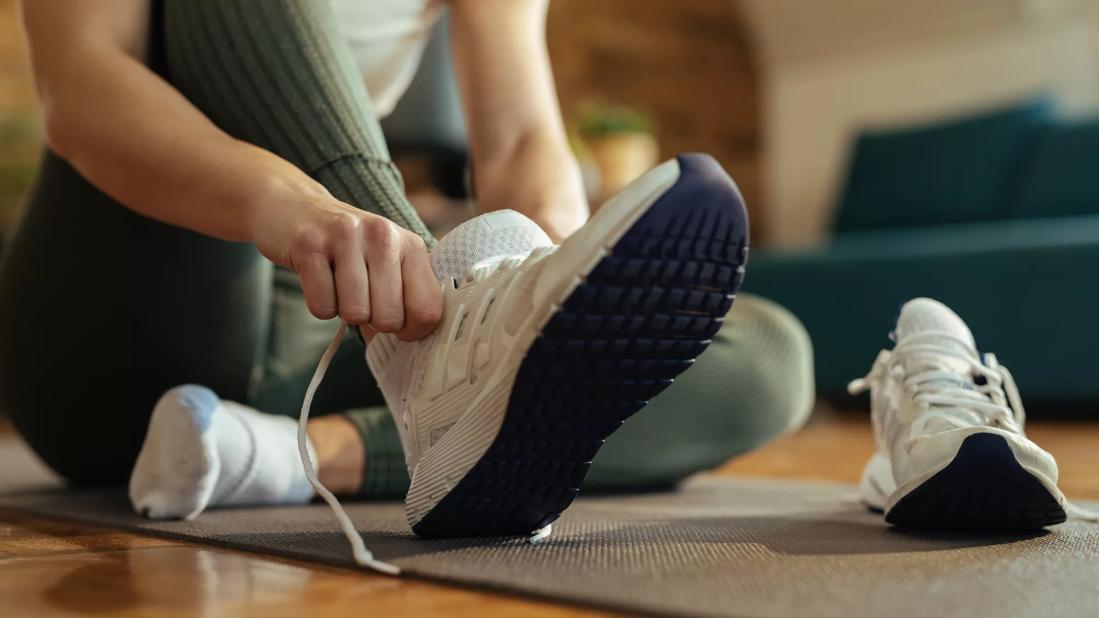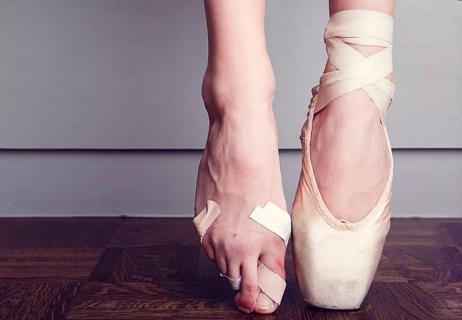Footwear that offers cushioning plus heel and arch support can help you relieve and manage symptoms

You might have heard about the importance of investing in good shoes. It’s sound advice, given how much of our lives we spend on our feet.
Advertisement
Cleveland Clinic is a non-profit academic medical center. Advertising on our site helps support our mission. We do not endorse non-Cleveland Clinic products or services. Policy
And if you’re among the millions with a foot condition like plantar fasciitis, you know that good footwear goes beyond just aesthetics. Your feet need a little extra care and support.
So, what shoes should be in your closet if you have plantar fasciitis? Let’s find out from podiatrist Gina Hild, DPM.
Plantar fasciitis affects a band of tissue known as your plantar fascia, which runs from your heel to the ball of your feet. The condition flares up when your foot is stressed or overused.
The best thing you can do for your feet if you have plantar fasciitis is to ensure they have ample arch support. But what does this mean exactly?
For starters, high heels, flat sandals and flip-flops should be avoided as much as possible — especially if you’re walking for long distances or extended periods (more on that in a moment).
Instead, look for footwear offering cushioning and heel and arch support to help relieve and manage plantar fasciitis, recommends Dr. Hild. This may look slightly different depending on the shoe. Here’s what to look for by shoe type.
A well-made sneaker will give you the best all-around support when it comes to footwear for plantar fasciitis. And there’s a range of options if you’re looking for good walking shoes.
Advertisement
Not all shoes are created equal, though — and typically, you get what you pay for, notes Dr. Hild.
When shopping around, look for walking or running shoes that have:
Walking or running shoes with these factors can help distribute your weight more evenly, reduce strain and create a more comfortable, supportive and softer feel for your feet during long walks.
Try brands like New Balance®, HOKA®, Brooks®, On (Cloud)® and Altra®.
Shoes for trudging up a hill are doing different work for you than shoes for walking on a flat surface. When shopping for hiking shoes, you’ll want to check off the same boxes as for walking shoes: good arch support and cushion.
Look for durable and grippy outsoles that provide good traction on different types of terrain, too. This can help prevent slips and falls, which can — unsurprisingly — make your plantar fasciitis symptoms even worse.
In addition, try to find hiking shoes with good ankle support to prevent injury.
Try brands like HOKA, Kuru®, Merrell® and Keen®.
Whether you’re looking for a fancy sandal or closed-toe dress shoe, certain features can help your plantar fasciitis.
If you need to wear dress shoes for work or special occasions, look for shoes with a supportive footbed and good arch support. Avoid high heels and shoes with a narrow toe box, as these can exacerbate your symptoms.
Brands like Aetrex®, Alegria®, Drew®, Dr. Comfort®, Aravon® and Lifestride® are known for offering comfortable, durable dress shoes that will give you style and support.
Flat shoes can be damaging for plantar fasciitis, but that doesn’t mean you need to give up on wearing summer sandals.
Look for sandals with a contoured footbed that supports your arch and keeps your foot from rolling inward. Oh, and a comfortable, supportive strap is a must.
Birkenstock®, HOKA, OOFOS® and Vionic® are a few brands that often fit the bill.
Here are some shoes you should steer clear of if you live with plantar fasciitis:
Advertisement
If you’re living with plantar fasciitis, there are ways to relieve pain and discomfort while keeping your feet strong and supported. Try these six tips to give your feet some TLC.
Advertisement
If you live with plantar fasciitis or a similar foot condition, the good news is that there are lots of varieties in shoe styles and brands. The tricky part is doing your research and making sure you’re getting what’s best for your feet and lifestyle.
It’s also a good idea to do your shoe shopping in person, if possible, so you can try different options, see how they feel and make sure they check off all of your boxes.
If you notice that a shoe you’re wearing is causing increased pain and making your plantar fasciitis worse, talk to your healthcare provider before shopping for another pair.
Advertisement
Learn more about our editorial process.
Advertisement

Try seated and standing exercises to help lengthen and strengthen the muscles that support your plantar fascia

Home remedies are unlikely to cure your contagious foot fungus — and they might even make it worse

Cramps can creep up if your shoes are too tight, you’re dehydrated or you have poor circulation

If soaking your feet, disinfecting your shoes and making lifestyle changes don’t do the job, it’s time to talk to a doctor

Genetics, hormones, medications and stress are just a few reasons your feet could be extra funky

Try stretching, massage, elevation and a supportive pair of shoes to help relieve foot aches and pains

Except in certain medical scenarios, foot health experts rarely recommend foot soaks

Poorly fitting footwear and overuse injuries can knock you ‘off pointe’

Start having sex about 72 hours before ovulation, then at least every other day during your fertile window

Attachment theory suggests that your earliest relationships shape connections throughout your life

It isn’t a recognized mental health disorder, but research shows that problematic social media use can negatively affect your mental health, self-esteem and sleep